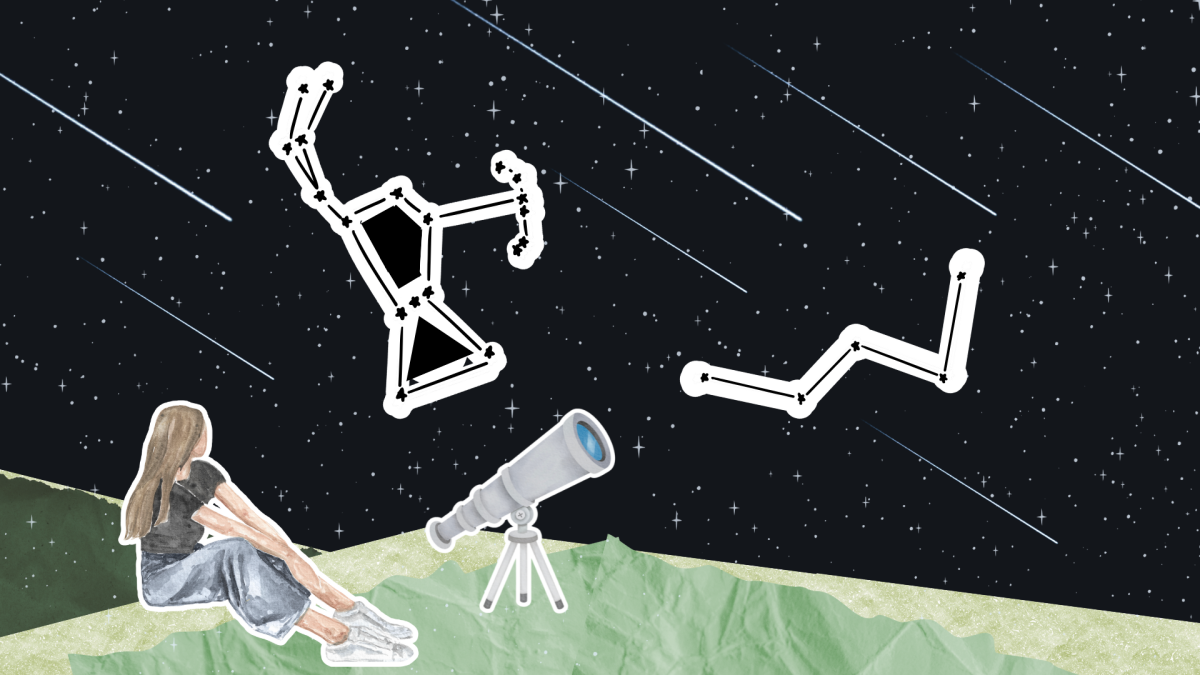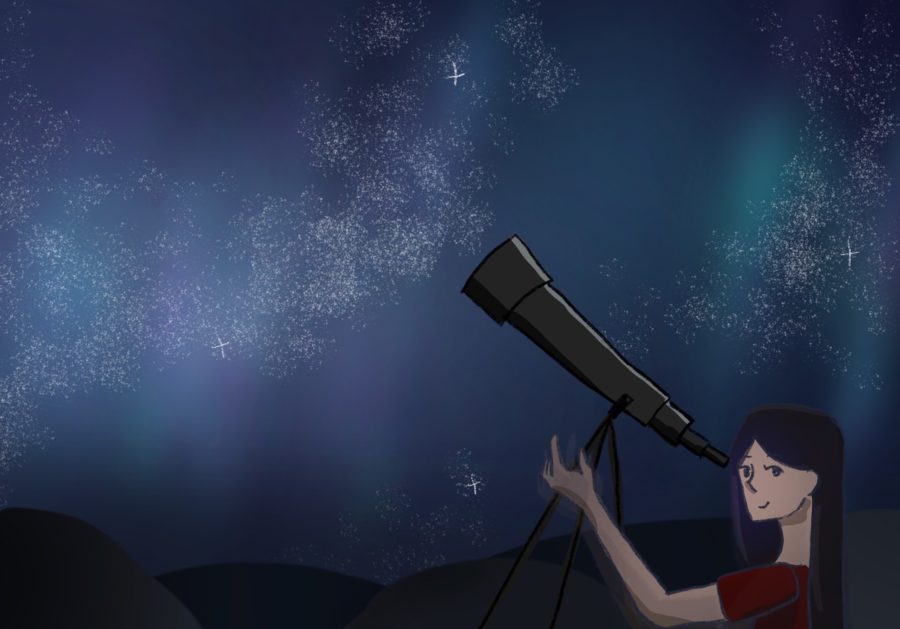Pandemic Pastimes: Astronomy, a Window Into the Universe
November 25, 2020
Remember the stars you see at night or the planets you learned about in elementary school? Did you ever wonder about their origins or their significance? Many of those who have come before us have had the same questions, leading to the development of one of the oldest fields in science: astronomy.
Astronomy is the study of celestial objects and phenomena. Throughout history, humankind has created many stories about the sky; for example, the Greeks represented characters in their origin myths with constellations. Despite some advanced inventions in the ancient world, like the celestial globe used for astronomical calculations in ancient Chinese dynasties, insufficient technology halted further understanding of extraterrestrial entities.
Fortunately, as civilizations developed, so did their scientific methods and tools to understand outer space. For modern astronomers, technological development and innovations have aided in the identification and classification of millions of star clusters, planets, moons, and other celestial entities.
Since the naked eye alone can only see so much, many of these discoveries have happened through telescopes, a tool first invented by Dutch eyeglass maker Hans Lipperhey in 1608, and first used for astronomy by astronomer Galileo Galilei in 1609. Since then, numerous people have made advancements to telescope technology and created countless types for various purposes, like weaker telescopes simply to view the stars or stronger ones to observe planets.
One prominent telescope, the Hubble Space Telescope, launched into earth’s orbit in 1990, and is currently used for extragalactic observations by NASA. The Hubble’s observations since its launch have led to breakthroughs in topics such as gamma-ray bursts, stellar evolution, and neutron stars. However, there exists only one Hubble telescope, and for hobbyist astronomy enthusiasts, simple and effective telescopes are sufficient for star-gazing. Luckily, a thriving community and market exist for ametuer astronomers to jump into the science!
To enjoy astronomy, you only need your eyes and your passion for the heavens. Just like the Greek, Roman, and Arab astronomers of centuries past, the allure of the vast cosmos that lies beyond our own realm inspires a sense of awe and curiosity.
For beginner ametuer astronomers, there are two major types of telescopes: reflectors and refractors. Refractor telescopes work by bending light from objects to a single point using a system of lenses. Reflector telescopes work by reflecting light from objects to a single focal point, usually through the use of a parabolic mirror.
Although both telescope designs are effective for observation, most professional and ametuer astronomers opt for the reflector design, as the reflector telescope can “collect” a greater amount of light. Mirrors are cheaper and easier to manufacture at a larger size than lenses, and thus are the choice for many astronomers.
As a beginner astronomer, a strong recommendation would be a 3-5” tabletop reflector telescope (such as the AWB OneSky or Celestron FirstScope). These telescopes provide decent views of planets such as Saturn and Jupiter, the Moon, the Sun, and large clusters and nebulae such as the Orion Nebula and the Great Globular Cluster of Hercules. Resist the urge to buy department-store telescopes; these are often poorly made refractors with inferior lenses! In the below $100 price range, a reflector provides the best bang-for-buck. For more information, see the resources attached.
So, what about people who are unable to afford the equipment or only want to understand the naked eyes’ perception of the heavens? Just like our ancestors of past centuries, one can enjoy astronomical observation without a telescope. Although many don’t realize it, the major planets of the solar system are clearly visible to the naked eye. In the southwest, you can find Jupiter and Saturn easily visible, setting shortly after dawn in the winter of 2020. Furthermore, the “red planet,” or Mars, rises high in the southeastern sky in 2020. Currently, it is the brightest object in the night-sky, its distinct red hue separating the planet from other stars.
In addition, extrasolar observation is available to astronomers, even in the light-polluted skies of Edison. By limiting the amount of light your eyes are exposed to, your eyes can adapt to the night sky This involves sitting outside for around twenty minutes and avoiding all forms of light (including house lights, streetlamps, and yes, your phone). However, the twenty minute wait equates to some amazing views.
From Edison, major constellations such as Ursa Major (The Big Dipper), Orion, and Cassiopeia are visible in winter skies with proper night adaptation. In the summer, asterisms such as the Summer Triangle are visible without night adaptation, but constellations such as Lyra, Aquila, and Cygnus are all prominently visible with night adaptation.
To enjoy astronomy, you only need your eyes and your passion for the heavens. Just like the Greek, Roman, and Arab astronomers of centuries past, the allure of the vast cosmos that lies beyond our own realm inspires a sense of awe and curiosity. All you need to do is look up, and you’ll find stars, galaxies, and nebulae staring back at you, thousands of light years away, in an endless and far-reaching universe.
Never fear if you are inexperienced in astronomy, as there are numerous resources available online. A simple search on Google or other search engines provides plenty of information for upcoming and exciting events like eclipses, supermoons, and meteor showers.
Did anything here pique your interest? Check out these resources to learn more:
The Basics: https://www.amnh.org/explore/ology/astronomy/what-is-astronomy
Reflector vs Refractor Telescopes: https://telescopicwatch.com/reflector-vs-refractor-telescopes/
Choosing Equipment for Astronomy: https://skyandtelescope.org/astronomy-equipment/how-to-choose-a-telescope/#:~:text=You’ll%20be%20forgiven%20for,refractors%2C%20reflectors%2C%20and%20catadioptrics.
News Updates on Astronomy: https://astronomy.com/
Timetable of important astronomical events in 2020: https://www.cambridge.org/turnleft/pages/whats_up_tonight/calendar2020
Finding Objects in the Night Sky: https://stellarium-web.org/
Telescope Recommendations: https://telescopicwatch.com/us/telescopes-rankings/























































































